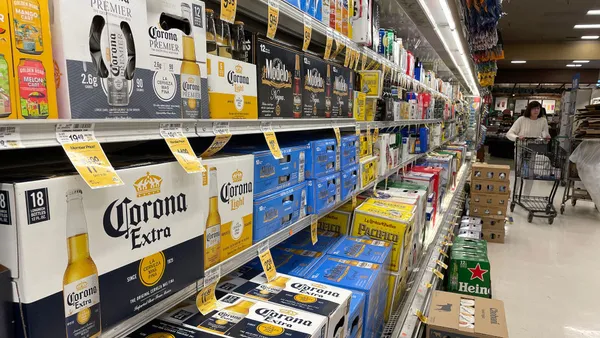Dive Brief:
- While supermarkets and mass merchants remain the top choice for consumers to purchase Thanksgiving essentials, more than half say they plan to switch which store they consider their primary destination when shopping for the upcoming holiday, according to a new FMI — The Food Industry Association report.
- This change is mainly driven by shoppers planning to visit a different channel altogether versus buying from another store within the same channel, FMI found.
- Similar to last year, the majority of consumers say they will shop in advance and visit specific stores for certain items.
Dive Insight:
Mass retailers will retain more of their primary shoppers than supermarkets during the popular food holiday, according to FMI’s research, holding onto 51% of shoppers who use their stores as their main grocery shopping destination compared to supermarket’s 42%. However, customers who do seek out another retailer for their Thanksgiving shopping needs will typically switch channels entirely.
The switch stems from consumers feeling that if their usual store isn’t meeting their holiday shopping needs, it is because they are in search of something that the channel as a whole does not offer, FMI found.
Supermarkets and mass retailers remain consumer’s primary shopping destinations for Thanksgiving for both food products and non-food goods.
To avoid shoppers switching stores and channels entirely, FMI suggests retailers stock stores with the popular non-food Thanksgiving items that shoppers seek in other channels. According to the report, 55% of shoppers plan to buy decorative nonfood items like seasonal paper products, house decor and table decor.
Even with the threat of shoppers switching away from their primary grocery store and being more strategic about where they purchase items for Thanksgiving, FMI found that shoppers tend to consolidate purchases to one or two stores.
Shopping in advance for Thanksgiving is a trend that carries over from 2023. This year, nearly a third of shoppers who celebrate Thanksgiving plan to buy goods up to two weeks ahead of the holiday while 27% said they would start shopping up to one month in advance. Meanwhile, just 5% of consumers shop the day of.
Nearly half of surveyed consumers in FMI’s U.S. Grocery Shopper Trends Holiday Season 2024 report who celebrate at least one November and December holiday are “extremely or very concerned about rising prices for food needed for special meals.” In response, many people are shopping early, spreading out purchases, seeking deals and shifting to more cost-effective brands.













